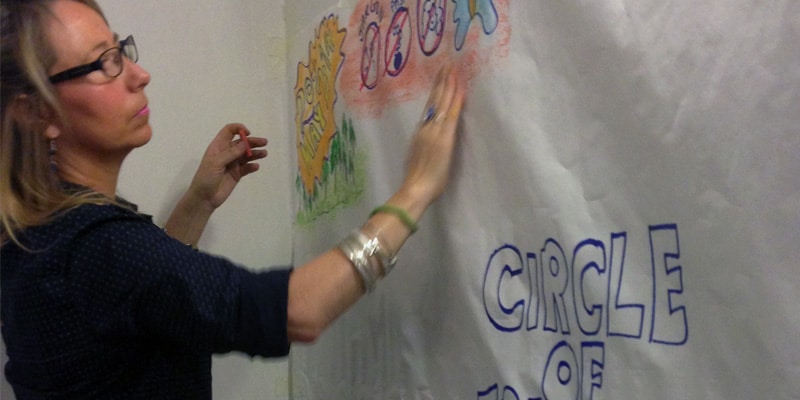WHAT MAKES PERSON-CENTRED PLANNING WITH MAPS AND PATH SO VERY DIFFERENT FROM OUR TRADITIONAL WAYS OF WORKING WITH YOUNG PEOPLE AND THEIR FAMILIES?
“Person-centred planning is an event, not a document”
Pete Ritchie (2002)
The term ‘person-centred planning’ was coined to distinguish this approach to planning from approaches that are framed by what services are typically available – so-called ‘service centred’ approaches. People’s lives are seen to be managed by the service system within service-centred planning, whereas within person-centred planning the individual is given as much choice and control as possible and this includes who comes to the planning meeting, where and when it is held and, crucially, that the young person whose meeting it is – is always present. The questions asked and the conversations that lie at the heart of MAPS and PATH go well beyond the mandate of any support service, school or statutory agency. So MAPS and PATH are not a substitute for an IEP, a Health Plan an ISP or any other type of service plan. What MAPS and PATH do is provide an overall direction for a person’s life, thus enabling particular services to see their role in supporting this. At the centre of PATH and MAPS is a vivid focus on the young person’s dream for the futureand what it would take to be travelling towards this. Bringing this dream into view on the graphic is the first step in in the PATH process. It is followed by a step that works backwards from the dream by asking the group to imagine what positive and possible milestones towards the dream could have been achieved within one year. The remainder of the steps within PATH are about the actions and the people that will be needed to make the desired changes. MAPS also puts the dream centre stage but has a variety of other steps and stages that lead to actions.
